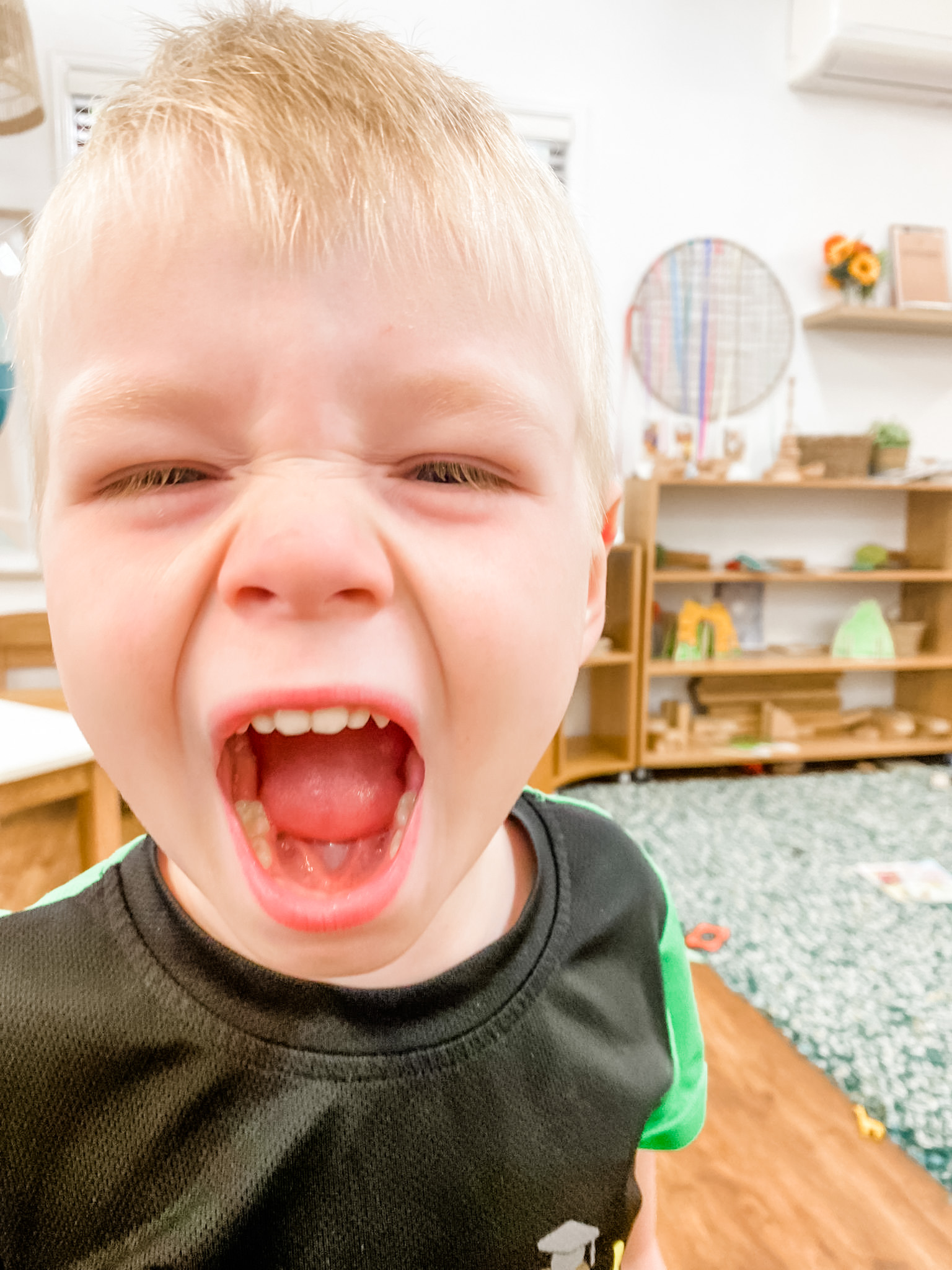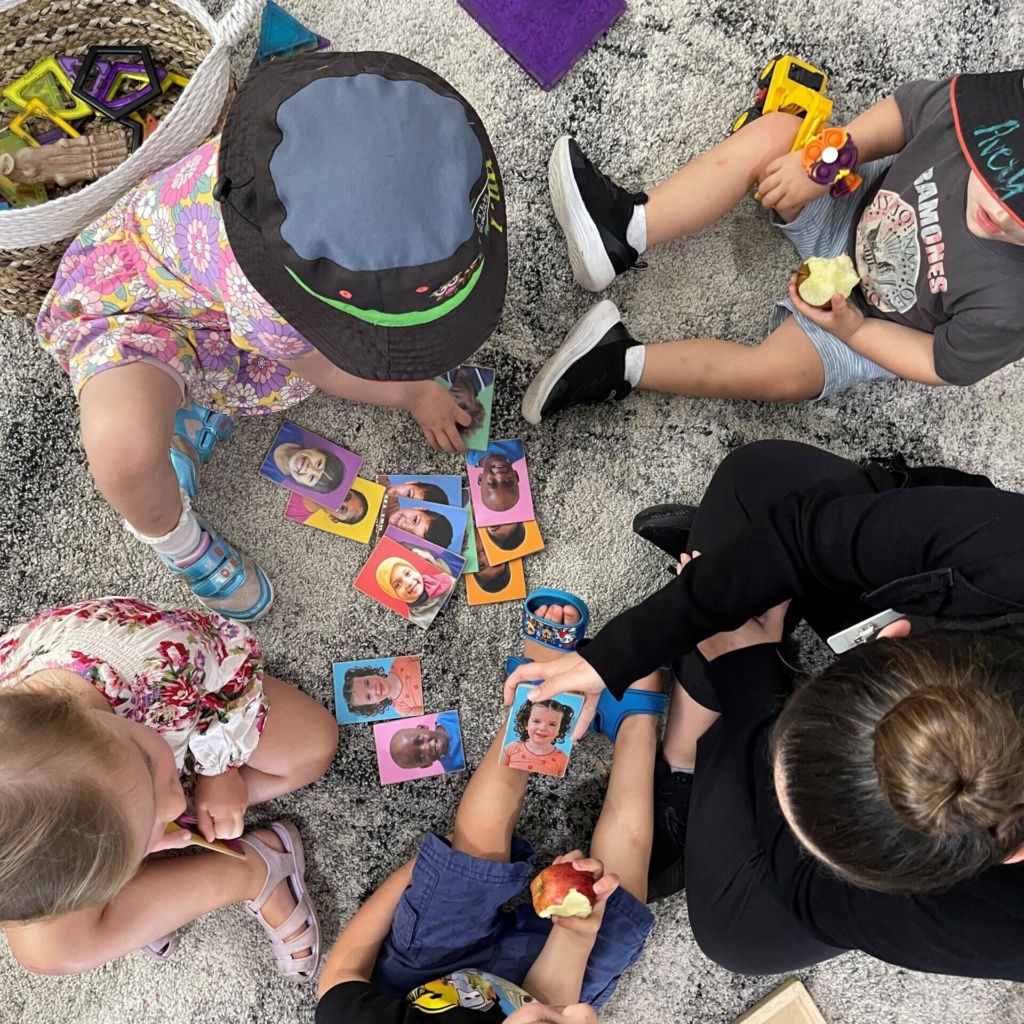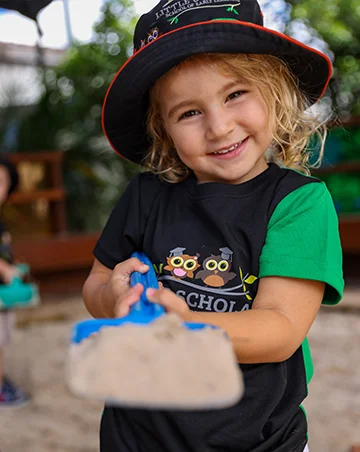Teaching children emotional awareness, in themselves and recognising emotions in others, is an important part of children’s growth and wellbeing. Understanding emotions is also not something ingrained, and not necessarily an easy thing to teach or grasp, especially as these small humans’ brains are rapidly developing in all areas.
In children, all kinds of changes are happening at the same time, and some areas, such as children’s language skills, develop before their self-regulation skills. This means that while your child may have a broad vocabulary, they still may not be able to put into words how they’re feeling. A toddler’s capacity to regulate their emotional state and emotional reactions can affect everyone around them, and can carry on to academic performance, long-term mental health, and their ability to thrive in a complex world.
Helping children to identify and label emotions is an important first step and something Little Scholars focuses on in our educational programming. Small children do not yet have the vocabulary to identify feeling words like angry or frustrated, or have the skills to “read” facial cues or to interpret body language.
So how do we teach emotional intelligence in children?
Even the littlest Scholars are learning emotional intelligence by communicating how they feel, according to Jodie, a lead educator in the nursery studio at Deception Bay.
“If a child is expressing an emotion or a behaviour, [we question] is it because they need something from us? ‘I can see you’re feeling sad, how come you’re feeling sad?'” Jodie says. “If we begin to speak to the babies about what they’re feeling, information I’ve learned from [child psychologist] Justin Coulson, it will relate to five things, either them being hungry, angry, lonely, tired or stressed. It’s often one of those things that will cause big emotions.
“They’re obviously not able to completely communicate with us on what their needs are. I’ve learned not to ask the children what they want, but what do they need?” she says. “Maybe they’re feeling hungry and frustrated, so offering them an apple could work, where they can get some of that anger out through crunching. Maybe they’re feeling tired, but they need a little more comfort first. What other feelings are they feeling?”
At our Burleigh campus, children and educators have feelings chats as part of their morning routine. In the Toddler studio, children ask their educators questions such as ‘why is she angry?’ providing a great opportunity for further conversation. Educators support the children in understanding their emotions through discussions as part of their morning routine.
“During the morning, we will sit down for our morning meeting [with children] so when we come inside, we’ll ask how they’re feeling, they’ll express how they’re feeling – happy, sad, ‘good’, and throughout the day we’ll do activities and they’ve gotten really good at recognising and showing those emotions,” says Sasha, lead educator in the Toddler 2 studio. “It’s crazy to see how much they can take in and understand.
“It’s harder for some of the younger ones [to grasp], but we still try to get them involved by asking ‘how do you think that person looks in the photo?’ or ‘how could we make that person feel better?’ and get them to try to understand how others may be feeling,” Sasha continues. “They’re getting really good at being able to understand their own emotions, and we try to support them in how they can support themselves if they are feeling sad, or feeling overwhelmed and need space. Next year they’ll be learning more about how others feel and how we can help them.”
Raylene, an educator in the senior kindy studio at our Yatala campus, says the benefits of exploring emotions, all emotions including the hard ones, allows children to not only identify them but develop the skills to go through them.
“One child mentioned that she would cry all day if she couldn’t see her mummy again. Mr J mentioned that he gets angry when he can’t find his treasures. Mr T doesn’t like when Mummy drops him off etc which led to a discussion about developing strategies to cope with these emotions when they occur. [It’s] so powerful. Mr J said that he could take a big breath and then think about where he put his treasures. Miss K said that she would give her sister a big hug if she couldn’t hug Mummy. Mr T said he could come with Miss Ray,” says Raylene. “Ensuring educators create opportunities for children to communicate their feelings and then giving children the tools to not only identify them, but develop strategies to manage them, rather than saying ‘you’re OK’ is the power moment.”
Tori, an educator at the same campus agrees.
Jodie is right. Research shows that children who learn how to understand emotions in themselves and others are better able to regulate their own responses to strong emotions. Helping children to identify and label emotions is an important first step, and this is supported by the Early Years Framework in helping children develop a strong sense of identity.
Further information
- Self-regulation in children and teenagers – Raising Children
- Emotional regulation in children – Parenting for Brain
- Talking with preschoolers about emotions – Penn State



